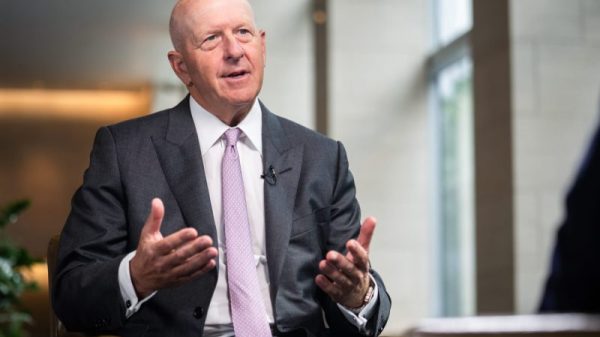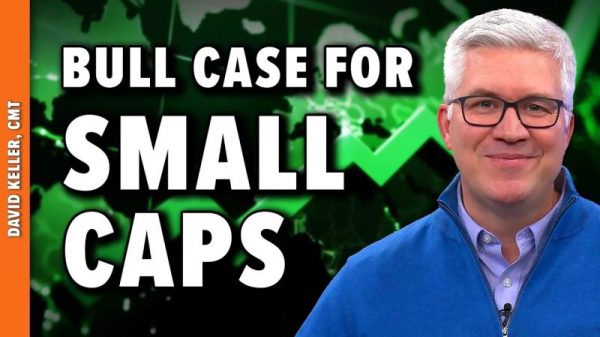DETROIT — Ford Motor’s profit engine for decades has been large trucks and SUVs in the U.S. So it might surprise investors that the automaker believes its new path to profitability for electric vehicles will first be led by smaller, more affordable vehicles.
The new plan is an “insurance policy” for the automaker to be able to expand its growingly popular hybrid models and create more affordable EVs that it believes will deliver a more capital-efficient, profitable electric vehicle business for the company and investors, according to Marin Gjaja, Ford’s chief operating officer for its Model e EV unit.
“We’re quite convinced that the highest adoption rates for electric vehicles will be in the affordable segment on the lower size-end of the range,” he told CNBC on Thursday. “We have to play there in order to compete with the entrants that are coming.”
Those expected newcomers are largely Chinese automakers, such as Warren Buffett-backed BYD, that have been rapidly growing from their home market to Europe and other countries.
Gjaja’s comments came a day after the automaker announced updates to its EV strategy that will cost up to $1.9 billion. That includes about $400 million for the write-down of manufacturing assets, as well as additional expenses and cash expenditures of up to $1.5 billion.
Ford’s new plans for North America include canceling a large, electric three-row SUV that was already far in development, delaying production of its next-generation “T3” electric full-size pickup truck by about 18 months until late 2027, and refocusing battery production and sourcing to the U.S.
Instead of the three-row SUV or large pickup, the company’s first new EV is expected to be a commercial van in 2026, followed the next year by a midsized pickup and then the T3 full-size pickup.
Gjaja said the decision wasn’t taken lightly, especially the cancellation of the upcoming three-row vehicle, which Ford CEO Jim Farley and other executives had been touting as a game changer for several years.
The commercial van comes as Ford’s “Pro” commercial vehicle and fleet business, which includes vans and large Super Duty trucks, has been a standout for the company and offset billions of dollars in EV losses.
And the midsize pickup is scheduled to be the first vehicle from a specialized “skunkworks” team in California, The company had tasked the team two years ago with developing a new small EV platform.
“We believe smaller, more affordable vehicles are the way to go for EV in volume. Why? Because the math is completely different than [internal combustion engine (ICE) vehicles],” Farley told investors last month. “In ICE, a business we’ve been in for 120 years, the bigger the vehicle, the higher the margin. But it’s exactly the opposite for EVs.”
Farley has said the weight and cost of battery packs needed for large vehicles such as a three-row SUV, which many families buy for road trips, towing and hauling, are a limitation for EVs due to current ranges and charging networks.
Ford’s current EVs — the Mustang Mach-E crossover, F-150 Lightning and a commercial van in the U.S. — are not profitable overall. The Model e operations have lost nearly $2.5 billion during the first half of this year and lost $4.7 billion in 2023.
The losses, as well as changing market conditions and business plans, caused Ford earlier this year to withdraw an ambitious 8% profit margin for its EV unit by 2026.
Investors and Wall Street analysts have largely supported the EV changes, most recently sending the company’s shares up about 2.3% since the announcement earlier this week, despite the expected costs.
“Overall, these changes will position Ford to benefit from growing demand for EVs, while also focusing on areas in which it has a Core competitive advantage,” BofA’s John Murphy wrote Wednesday in an investor note. “Given the size of the charge, this is clearly a tough decision in the short-term, but we think makes sense in the medium to long-term given what will likely be subpar economics in the three-row CUV/SUV segment.”
The updates are the latest for Ford’s electrification plans, which now include a heavy focus on hybrid and plug-in hybrid electric vehicles, or PHEVs, to assist in meeting tightening fuel economy regulations in addition to all-electric vehicles.
Ford CFO John Lawler said Wednesday that the company’s future capital expenditure plans will shift from spending about 40% on all-electric vehicles to spending 30%. He did not give a timeline for the change, but it’s a massive swing from when the company announced plans in 2021 to spend more than $30 billion on EVs through 2025.
The hybrid plans include offering such options across its entire North American lineup by 2030, including three-row SUVs, to assist in meeting tightening emissions and fuel economy requirements. Lawler said that to improve profitability, Ford is also accelerating the mix of battery production in the U.S. that will qualify for tax incentives and credits.
The shift in Ford’s plans is consistent with the overall auto industry, which is facing growing, but slower-than-expected adoption of EVs, as well as automakers not being able to achieve expected profitability on the vehicles.
“What we saw in ’21 and ’22 was a temporary market spike where the demand for EVs really took off,” Gjaja told CNBC during an interview earlier this year. “It’s still growing but not nearly at the rate we thought it might have in ’21, ’22.”
There’s also an industrywide fear that Chinese automakers could be able to flood markets with cheaper, more profitable EVs. Chinese automakers such as BYD are quickly growing exports of vehicles to Europe and other countries.
Lawler pushed back Wednesday on the idea that the Chinese have outgunned American automakers. He said the Ford, in part, developed the skunkworks team to prove that Ford can compete against the Chinese automakers.
“As we’ve watched in the last 18 to 24 months, the emergence of incredible products and formidable competitors in China has really been, I think, the story for us,” Gjaja said. “And so now, when we look at the competitive landscape, we have to chin ourselves against the most competitive companies in China.”
Ford’s new plans are polar opposite of its closest rival, General Motors.
America’s largest automaker has pulled back spending and delayed many of its EVs, but it has several large all-electric vehicles on sale coming soon.
GM was among the first to go “all in” on EVs, including by creating a vertically integrated, dedicated electric vehicle platform and supporting technologies such as batteries and motors.
Aside from Tesla, GM was the first automaker to begin U.S. battery cell manufacturing through a joint venture at scale, which the company has continued to tout as a cost advantage
GM’s current lineup includes three all-electric large pickup trucks, a Hummer SUV, two recently launched Chevrolet crossovers, a luxury Cadillac crossover and $300,000 Celestiq car. Several more crossover models and an all-electric Escalade SUV are expected to join the lineup this year as well.
As recently as last month, GM reconfirmed expectations for its EVs to be profitable on a production, or contribution-margin basis, once it reaches output of 200,000 units by the fourth quarter.
A GM spokesman Thursday said the automaker continues “to work to reach variable profit positive during the fourth quarter.”
Gjaja declined to comment on GM’s target or operations but said Ford is doing what’s best for the company.
“We’re focusing on what we think are the right technologies to serve our customers that can also be affordable for them and profitable for us,” he said.


































